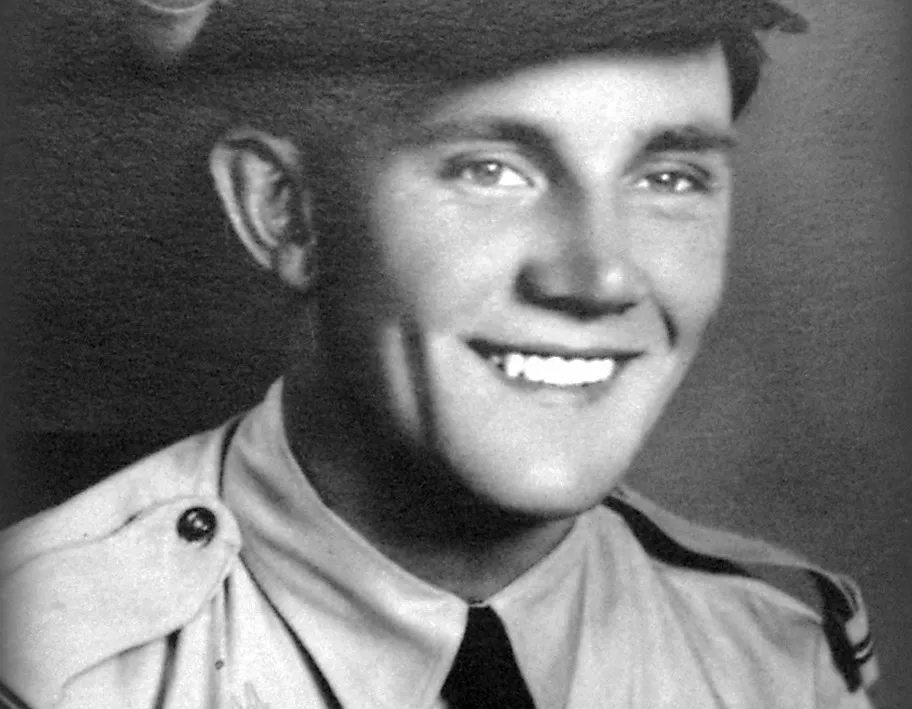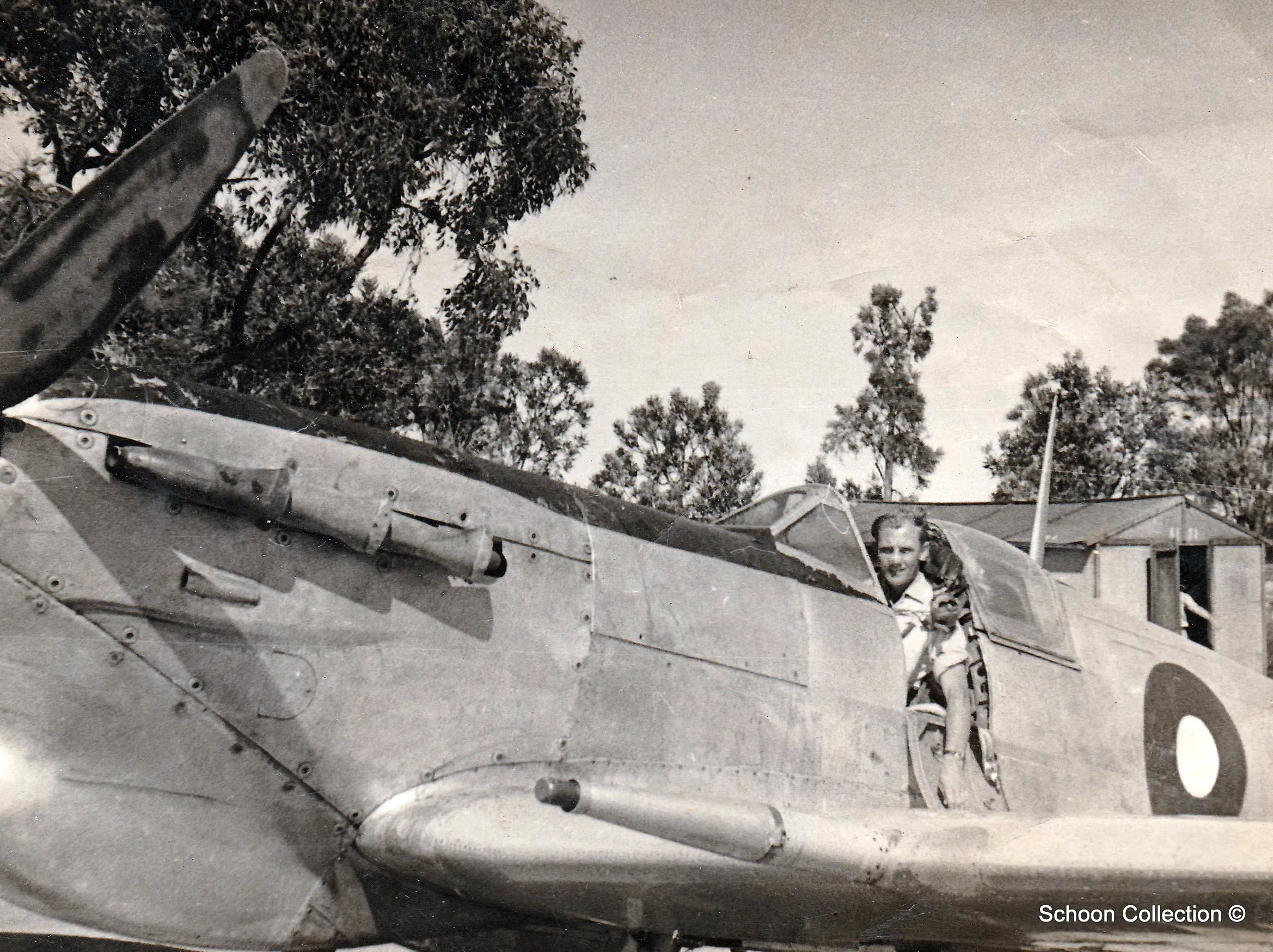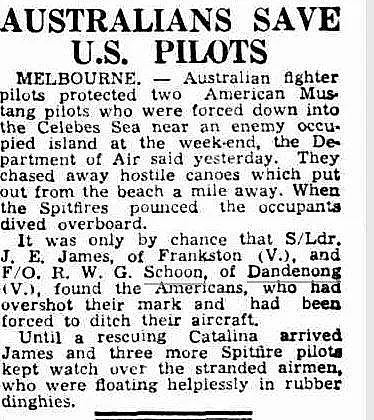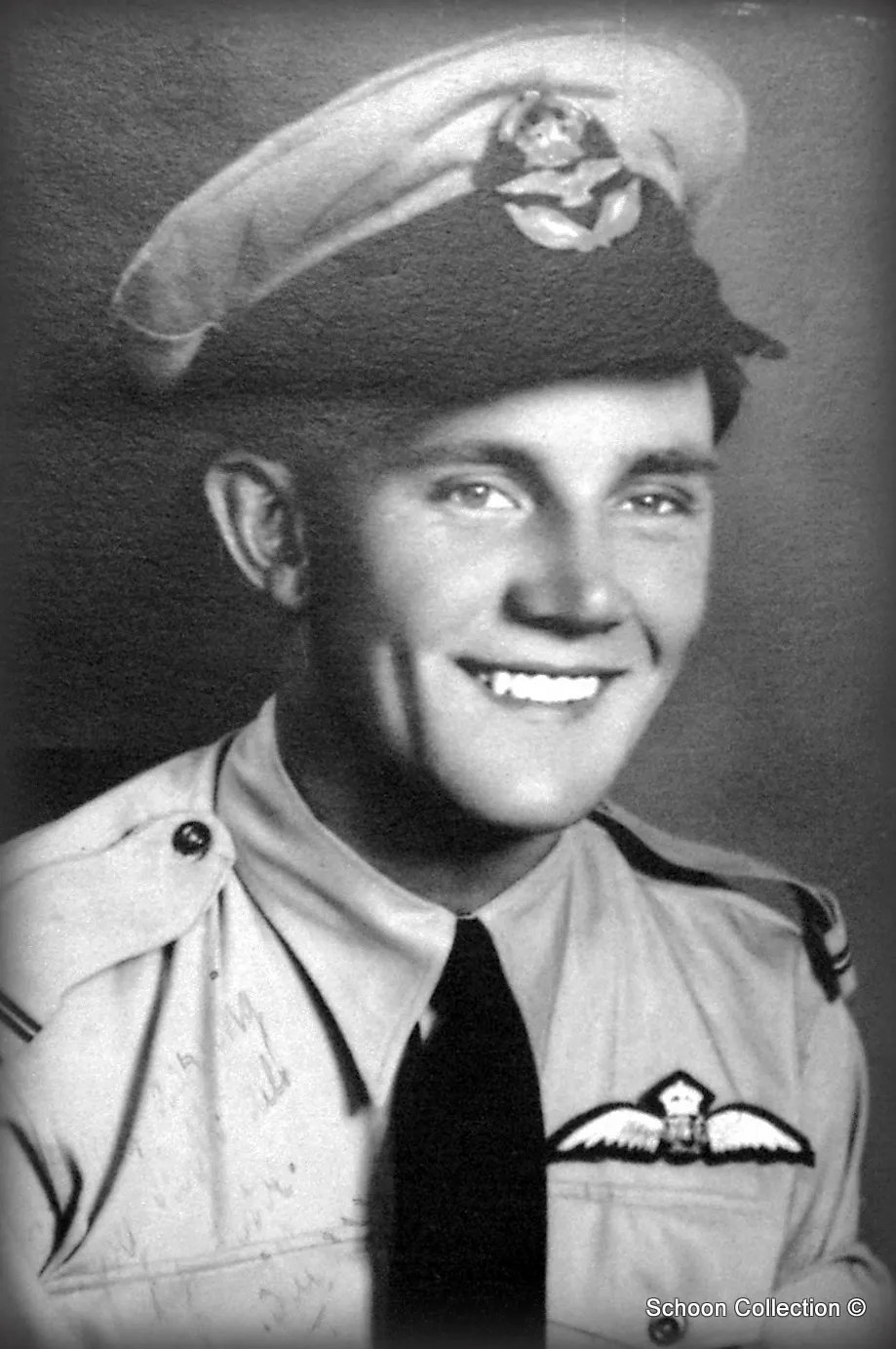FLTLT Reginald William Gearing Schoon 410734



| Squadron/s | 79 SQN 85 SQN 452 SQN |
| Rank On Discharge/Death | Flight Lieutenant (FLTLT) |
| Nickname | Bill |
| Mustering / Specialisation | Pilot |
| Date of Birth | 26 Oct 1922 |
| Date of Enlistment | 21 Jan 1942 |
| Date of Death | 21 Jan 1997 |
| Contributing Author/s | Lyn Shoon (Daughter) Karen Paterson The Spitfire Association 2021 |
Bill learned to fly on Tiger Moths at Western Junction, Tasmania. He then trained and flew Wirraways followed by Boomerangs at Mildura. Having completed his OTU training Bill's orders were to ferry a Boomerang to the recently formed 85 Squadron at Guilford, WA and on to their Northern Detachment at Exmouth Gulf, code named 'Potshot'. The detachment was there to protect the secret USN tender supporting offensive submarine operations.
While at 'Potshot', 85 Squadron's Boomerangs carried out three very close night intercepts of Japanese bombers. Bill's sortie on 15 Sept 1943 resulted in a close call, as he flew into the enemy aircraft's slipstream and was tossed about. He recalled, "I temporarily lost my night vision and was given a left turn . . . maybe if I had turned right I could have got a shot in!
Further north, 85 Squadron was kept busy giving cover to our Catalinas conducting cloak and dagger sorties into Timor from Yampi Sound.
During March, 1944 a large Task Force of Japanese vessels was spotted heading for Perth and 85 Squadron was ordered back South to Perth and placed on 24 Hour Alert. At the same time 452 Spitfire Squadron was also urgently ordered to Perth. It proved abortive as the Japanese Fleet turned back and entered Lingayen Gulf in the Philippines where a fierce naval battled ensued. We were very lucky to say the least!
It wasn't long before inevitable contests took place between the visiting Spitfires and Bill's unexpected mock dogfight with Spitfire C.O., Lou Spence. From Bill's memoirs: "On one occasion I actually had the audacity to take on Lou himself, although initially I didn't know it was him. We both came in to circuit together, (he in his Spitfire, me in my Boomerang), and I allowed him to get behind me . . . then it started! For at least 5 minutes we were both engaged in maximum turns just above the trees. Flicking wings and executing various high speed stalls, I tried every trick in the book, but couldn't shake him off, so eventually I conceded defeat by waggling my wings, and went in to land. The Spitfire taxied past, and as the pilot dropped his cockpit door, I recognised Lou. He gave me a friendly wave, and knowing he had several enemy aircraft to his credit, I accepted this as a compliment, but it taught me never to try my techniques against him a second time!"
85 Squadron commenced re-equipping with Mk.V Spitfires in September 1944. After familiarisation on Spitfires, his next posting was to 79 Squadron which took him to Morotai - and Borneo, in the South West Pacific Area (SWPA).
During 1945, Bill flew Mk.VIII Spitfires with 79 Squadron and 452 Squadron - "Flying them was delightful, with the beautiful purr of the giant Merlin engine. They had no vices and their stall always gave a very considerable shudder before the aircraft decided to give up flying! This saved my bacon at least once. When coming in low to strafe some hidden barges I must have been a victim of 'target fascination' as I saw my shells hitting and left the pull-up a fraction of a second too late. With the ground coming up fast, I had to heave back violently and, with that shudder my Spitfire thankfully responded mere feet of the deck as the palm leaves brushed my wing! Any other aircraft would have either mushed into the trees or performed a fatal high speed stall."
"On one sortie, flying Number 2 to our C.O., S/L Skeeter James, we were out on a long range reconnaissance of the Sanghie Islands, some 230 miles from Base. Beginning a circuit of the first island, we flew around the corner and, there in the shallow waters were two American Mustangs - P51s. The beach was already crawling with Japs and natives and some were actually standing on the wings. No sign of the pilots, which was rather ominous as we knew they would be killed if they were taken prisoner, for we had never had one single survivor reported! The C.O. decided we would strafe the aircraft and put them out of commission. Pulling up from one attack run, we saw in the distance 2 native Prahus, each containing about 10 men with Japanese at the helms. Then, much to our delight, we spotted 2 yellow life rafts, with the two ditched pilots standing up and waving frantically! They had been desperately trying to defend themselves with their .45 automatics and, even at 50 feet, we could clearly see their happy smiles . . . their relief was obvious but they were not safe yet! We decided not to sink the prahus, as we didn't want any unnecessary reprisals, but to fire near them and force them away. After a couple of runs, we succeeded in turning them away.
Knowing we needed back-up and without full fuel tanks, the C.O. told me to high-tail it back to Base and send out relief. Dropping my belly tank and opening up, I was soon cruising at a steady 320 knots and began to give radio calls for help, stating the latitude and longitude of the two pilots. Apparently my receiver went unserviceable as I had no reply, despite my IFF being switched on. Approaching our Base, I was given an immediate Straight In, and rolled up to our dispersal area. I was instantly surrounded by a lot of Ground and Air Crew who thought the Boss had gone in. Rapidly giving them details, a fresh section with full drop tanks took off. Later that evening, we received a signal from Zamboanga, indicating that the pilots had been picked up by a Catalina, and conveying the thanks of the two fortunate survivors."
We were very relieved, as it had just come to our attention that 4 Australian Kittyhawks had over-shot Morotai in stormy conditions, and had landed in similar circumstances. Three pilots gave themselves up to the Japanese, only to be beheaded. The other, Frank Waters, whom I flew with at Deniliquin, paddled out to sea and was never found. After the War, I believe the Japanese Officer who was responsible for these atrocities, was charged before the War Crimes Tribunal."
Bill's love of flying continued throughout his 74 years. He passed away in Buderim, Queensland on 21st January, 1997.


